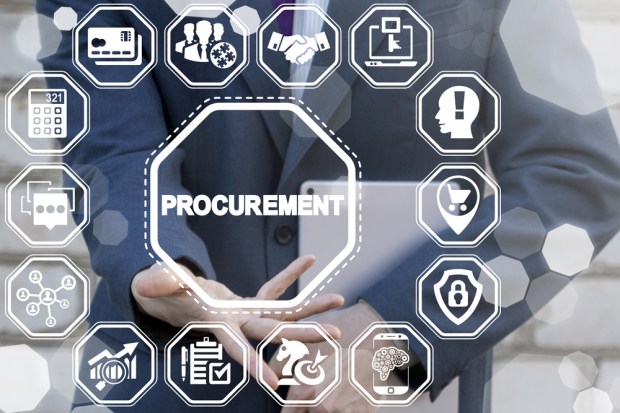P-Cards Not Reaching Their Full Procurement Potential

To recognize progress, sometimes it’s necessary to look back. That’s what researchers Dr. Mahendra Gupta and Richard J. Palmer did for their “P-card Benchmark Survey,” which surveyed purchasing card (p-card) program administrators about their firms’ commercial card adoption.
In a recent report for Treasury & Risk, Gupta and Palmer pointed to a nearly three-decade-old report from Harvard Business Review predicting a major overhaul of corporate procurement and payment operations resulting from the adoption of commercial card products. In the 28 years since that report was published, p-card spending has reached more than $350 billion a year — from next to nothing in 1990.
Despite its growth, the researchers noted that businesses across North America continue to fail to obtain the full benefits of a robust p-card program because, as they explained, “a high proportion of that spending is conducted by only a fraction of p-card adopters.” In their survey, which questioned 3,408 p-card administrators at corporate customers of top banks including Citibank, Bank of America Merrill Lynch, Wells Fargo and others, researchers identified an 80:20 pattern: 80 percent of all p-card spend is conducted by just 20 percent of p-card users.
It’s not entirely clear why this imbalance exists, the report’s authors noted, “but it’s safe to say that many organizations, after making the decision to adopt card-based payments for goods and services, have found the implementation to be challenging.”
For all of its growth in the enterprise payments market, the p-card has failed to live up to the expectations analysts set for the tool decades ago. Even so, Gupta and Palmer’s research concluded that corporates remain convinced of p-card value, and were able to calculate the dollar value of using p-cards.
Their analysis also shed light on some of the warning signs for businesses that their p-card programs may be underperforming. One of the biggest signs to watch out for, they said, is the failure among business leaders to actually assess the progress of their p-card programs. Managers who fail to reward p-card progress, and employees who raise issues with the p-card’s ability to meet their spending needs, are also key warning signs.
Other issues include poor integration of p-card programs into existing systems, the adoption of “static” programs that fail to evolve with market changes, and the continued use of legacy systems and processes by employees who have the option to use a p-card.
Gupta and Palmer also outlined how businesses can respond to these warning signs, emphasizing the importance of supplier engagement, employee p-card training, clear p-card spend policies and the development of key performance indicators to measure p-card use.
Below, PYMNTS examines the data that the researchers published in their p-card report:
$87,272,852: the average annual spend on p-cards for a public Fortune 500-size company. These businesses make an average of 173,898 p-card transactions a year, with millions of dollars in savings linked to working capital float, card-issuer rebates and supplier discounts.
$89.99: the cost of a single procure-to-pay transaction using a paper-based purchase order process, according to the report. Researchers estimate that this cost goes down to $20.14 per transaction when a p-card program is implemented.
29 days of capital float are one benefit of using a p-card, researchers said, with working capital savings equivalent to a 0.4 percent discount on procured goods and services.
17 percent of transactions between $10,001 and $100,000 are paid by p-card at Fortune 500 firms, researchers calculated. The figure suggests that, despite their reputation for being used only for small, one-off purchases, p-cards can indeed be deployed for high-value procurement. On average, employees with access to a p-card at these Fortune 500 firms spend $300 each per month.
9.9 days: the length of time it takes between need identification to receipt of goods via traditional PO methods. This time span is reduced to an average of 2.9 days between identifying the need for goods or services and receiving them when a p-card program is used, the report found.
